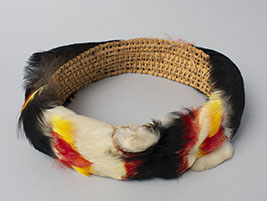
Megann F. asks:
How do you handle artifacts with a questionable past? Anything from Nazi memorabilia, to artifacts stolen from cultures while empire building? I imagine that many are still hstorically/ethnically/ evolutionary significant.
This is an important—and complicated—question. The Maxwell Museum is careful to ensure that any new collections we accept were legally and ethically acquired. But collecting practices were often quite different decades ago, and some of the objects in our collections would not be considered appropriate to collect today.
In making decisions about such collections, we are governed by a number of laws and conventions that provide guidance on both the acquisition and return of human remains and cultural objects. These include the Native American Graves Protection and Repatriation Act (NAGPRA), the 1970 UNESCO Convention on the Means of Prohibiting and Preventing the Illicit Import, Export and Transfer of Ownership of Cultural Property and the American Alliance of Museums Guidelines Concerning the Unlawful Appropriation of Objects During the Nazi Era, among others (including even the Endangered Species Act, which is relevant to cultural objects made with feathers, ivory and other elements from endangered species).
The first steps in addressing these collections is to carefully document them and work to trace their complete history of acquisition (what museums call provenance). Under NAGPRA, museums must report all human remains, funerary objects, sacred objects and objects of cultural patrimony in their collections to the National NAGPRA Office and to related Federally Recognized Tribes and Native Hawaiian organizations. We then initiate consultations with Tribal representatives that can lead to their eventual return to communities. In international cases as well, consultation and collaboration are essential to ensure that our collections are both legally and ethically held. While this means some things will leave the museum’s collections to return to their proper homes, the relations forged during honest and respectful interactions create exciting opportunities for new partnerships that greatly enrich our commitments to research, teaching and public engagement.

66.16.13
Shuar headdress, woven plant fiber and feathers
collected by Don South in 1962, donated by Florence Hawley Ellis in 1966